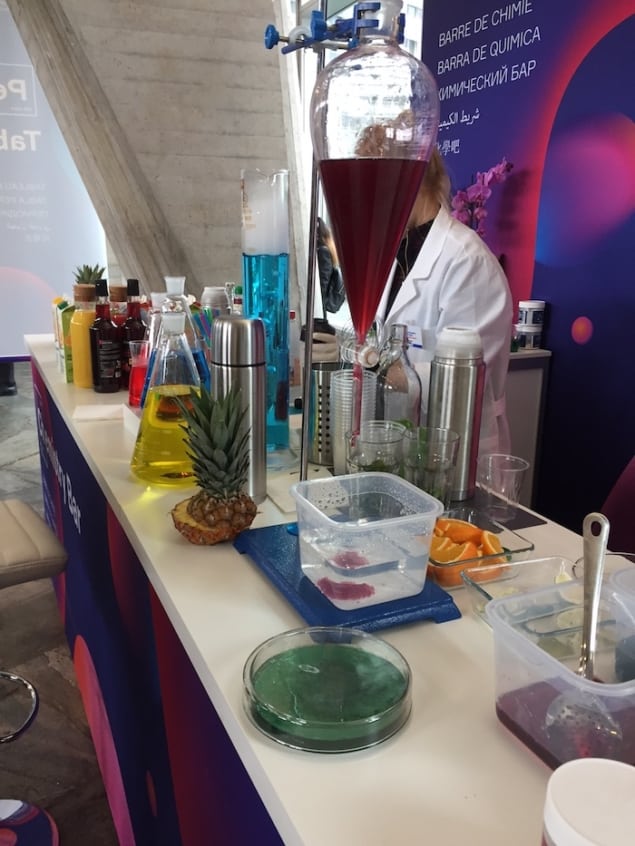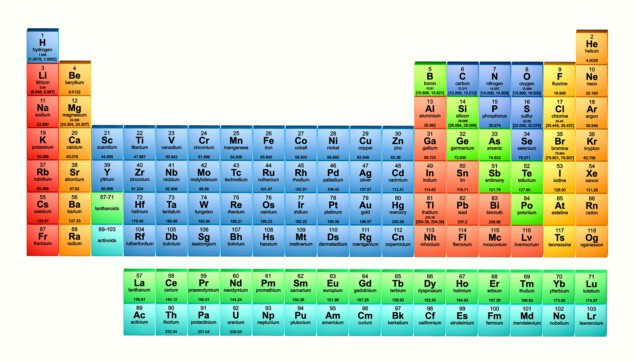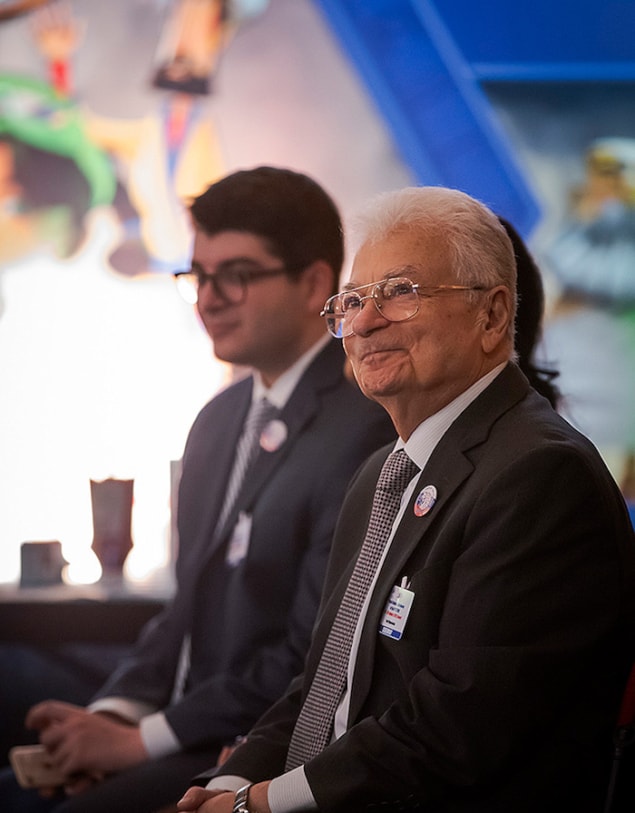
“The periodic table tells us a story – its aim to understand the essence of all things,” said UNESCO Director General Audrey Azoulay in her introductory speech at the opening ceremony of the International Year of the Periodic Table of Chemical Elements (IYPT) that took place at UNESCO’s headquarters in Paris this week.
In proclaiming 2019 as the IYPT, the United Nations says that it has recognized the importance of raising global awareness of how chemistry can help in reaching sustainable development goals and provide solutions to worldwide challenges in energy, education, agriculture and health.
“The periodic table (PT) is one the greatest achievements in science ever,” added Pierre Corvol, who is president of the Académie des Sciences at the Institut de France. When Russian scientist Dmitry Mendeleev pioneered the table 150 years ago in 1869, the existence of the atom was unknown and only 60 elements had been discovered (there are now 118) and some of the information about these 60 was even wrong. Mendeleev was visionary in that he left boxes for elements that had not yet been discovered. He also importantly predicted the properties of five of these elements and their compounds. Indeed, three of these were subsequently discovered within his lifetime.

An unelementary affair: 150 years of the periodic table
“The PT’s longevity comes thanks to its simplicity. All schoolchildren learn about this table.”
Mikhail Kotyukov, minister of science and higher education of the Russian Federation, added that Mendeleev’s heritage “applies to all humanity”.
Celebrations all year
The IYPT opening ceremony was a joyous, almost party-like, event – with musical interludes from renowned pianist Mira Yevtich – and was a true celebration of the significance of the PT and its applications to society. It was also real kick-off to all the events planned for the year ahead around the world. These include, for example: The Periodic Table Challenge and the Periodic Table of Younger Chemists, both organized by the International Union of Pure and Applied Chemistry (IUPAC), which celebrates its centenary this year; the Postgraduate Summer School on Green Chemistry in Africa organized by the The Interdivisional Committee on Green Chemistry for Sustainable Development (ICGCSD); the International Nuclear Physics Conference 2019, organized by the Institute of Physics (IOP) and co-sponsored by the International Union of Pure and Applied Physics (IUPAP); and the International Symposium on Setting their Table, organized by the IYPT.
This event, which will take place at the University of Murcia in Spain from 11-12 February, will highlight the women who contributed to the discovery of the PT elements. These female role models include Marie Curie, who discovered radium (Ra) and polonium (Po), Bertha Karlik, for her discovery of astatine (At) and Lise Meitner, for an isotope of protactinium (Pa), to name but three oft-overlooked heroines.

During the day, there was also a chance to visit the extensive Periodic Table Exhibition, which included: The Molecular Bar, where participants could try ice cream made using liquid nitrogen; 1001 Inventions: Journeys from Alchemy to Chemistry, which is a new educational initiative; and the Zone of Novel Elements, a stand of the Joint Institute for Nuclear Research in Dubna, where elements 105 (dubnium), 114 (Flerovium), 115 (moscovium) and 118 (oganesson) have been named. Visitors could even take a selfie with Mendeleev in a specially reconstructed 19thcentury chemist’s study.
Outreach is of course highly important, especially to engage young people, as Sir Martyn Poliakoff of the University of Nottingham, who has lots of different types of PTs (of snacks, fruit, and even ties) in his office, stressed in his talk. Poliakoff has been making videos of the PT since 2008. “Quite little children have persuaded their parents to come and meet me and my colleagues in Nottingham. I tell them that the PT is like a big family photo – you sometimes can’t remember all the names of the family members but perhaps only some facts about them.”

2016 Chemistry Nobel Laureate Ben Feringa said in his lecture that the PT is a real “hero of chemistry” and that Mendeleev taught us how we can use this table to build molecules and materials in the lab by combining different elements. “We scientists greatly value the PT because it is our common language. Thanks to Mendeleev, it is also a powerful guide to making the compounds of the future.”
Hand-made elements
The periodic table of the elements has been slowly getting bigger over the years. For a long time, it contained only naturally occurring elements, starting with hydrogen and finishing with uranium (atomic number 92). These elements, which were made in nuclear reactions that occurred at different times and different places in the universe, have half-lives comparable to the age of the Earth (about 4.5 billion years). The nuclei of elements beyond uranium have lifetimes that are less than this so need to be created in artificial nuclear reactors.

This aspect of nuclear physics forms an important part of the physics-related celebrations of the IYPT – remembering how the more recently discovered elements have been made and looking forward to how elements with atomic numbers greater than 118 will be created in the future. Oganesson is element number 118 and is currently the last element in the PT, found at the end of the 7th row. It is named for Yuri Oganessian, who himself gave a talk at the opening ceremony, entitled “Hand-made elements”. Oganessian is working on synthesizing and studying elements 104 to 118. He has developed methods to make these heaviest of nuclides, which led to the discovery of the island of stability of super heavy elements.
Leaving a legacy
Looking to the future, the IYPT also needs to leave a legacy that will go beyond this year’s celebrations, say Jan Reedijk and Natalia Tarasova, co-chairs of the IYPT Inter-Union Management Committee. The PT is not only about chemistry but also other science areas, like physics and biology. “It is a unique tool, enabling scientists to predict the appearance and properties of matter on Earth and in the rest of the Universe.

Scientists celebrate 150 years of the periodic table at UNESCO headquarters in Paris
“The IYPT will enhance international cooperation by coordinating activities between learned societies, educational establishments and industry, focusing specifically on new partnerships and initiatives in the developing world, and establish durable partnerships to ensure that these activities continue in the future,” they say.
And as computational physicist Sandro Scandolo of the Abdus Salam International Centre for Theoretical Physics (ICTP) very aptly put it, perhaps we should consider adding two new elements to an imaginary periodic table: Ed and Rs – for educatium and researchium. “Ed would be element number 0, because zero is where everything starts, and Rs number 119.”



